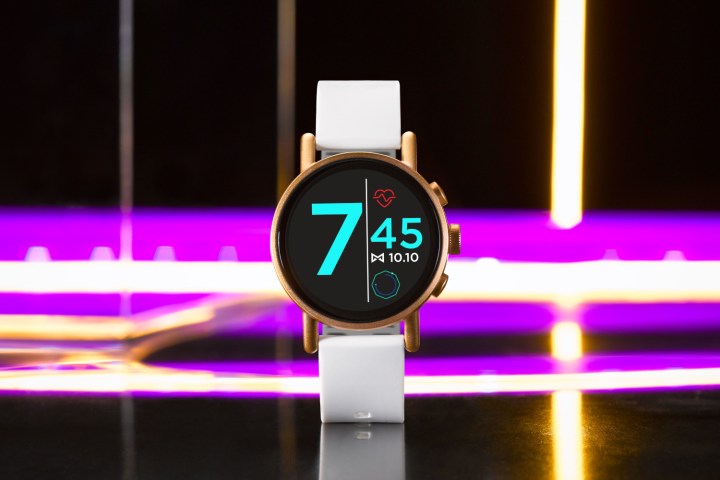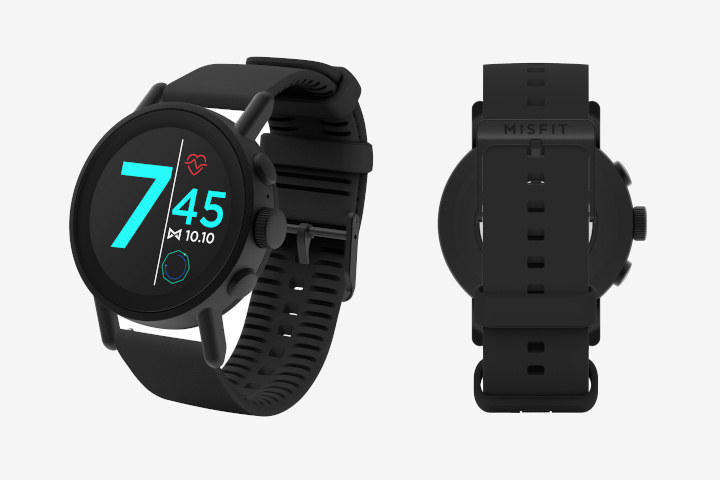
Good smartwatches aren’t hard to come by, but they are if you want to find them at a good price, and Misfit is the brand to follow for Wear OS watches. The original Misfit Vapor and Misfit Vapor 2 proved the company has serious potential. Now it’s revealed the next smartwatch in this line — which our Misfit Vapor X review calls one of the best we’ve used in a while.
The Vapor X is aimed at those with a more active lifestyle, wooing them with a new lightweight aluminum-alloy body and a new strap designed to be comfortable over long periods of wear. It’s not just for fitness fanatics, though: The inclusion of the powerful Snapdragon Wear 3100 processor will mean it appeals to a much wider audience. Could the Misfit Vapor X be your next smartwatch? Here’s everything you need to know.
Take a look at the Vapor X and you’re forgiven for assuming Misfit just copied the Vapor 2 and called it a day. That’s not the case: Misfit completely re-engineered the Vapor X to appeal to a new crowd. The new 42mm aluminum alloy build weighs just 43 grams and measures only 12mm in thickness. It hasn’t sacrificed screen size, though, and you’ll find a 1.19-inch AMOLED touchscreen around the front. The redesigned strap is called the Sport Strap+, and Misfit claims it’s meant to be ultra-comfortable — but if you’re not a fan for whatever reason, you can swap it out for any other 20mm strap or bracelet.
It’s rocking some powerful specs, too. Misfit has finally ditched the outdated Wear 2100 chip for the new Wear 3100 in the Vapor X, along with 512MB of RAM and 4GB of internal storage. Misfit hasn’t revealed how large the Vapor X’s battery is, but we know it comes with a magnetic charger that’s capable of charging 80% of the battery in just 50 minutes.
As you might expect, fitness capabilities are strong. Misfit claims the Vapor X includes a world-class activity tracker, along with a “best-in-class” heart rate sensor on the back. Those impressive boasts are backed up with water-resistance up to 30 meters, untethered GPS for off-grid hikes, and an array of sensors, including an altimeter, accelerometer, and a gyroscope. It’s not just about the fitness though, and you’ll also find NFC for Google Pay, Bluetooth, and a microphone as well.
The Vapor X is powered by Google’s Wear OS, and it’s compatible with iOS devices from iOS 10 and above, and Android devices running Android 4.4 and up (excluding
The Misfit Vapor X costs $280 and comes in all-black, rose gold with a grey strap, champagne with a lavender strap, gunmetal with a green strap, and stainless steel with a navy blue strap. Misfit also sells a variety of alternative straps, including a metal link bracelet, plus nylon and NATO-style straps. It’s available through Misfit’s own website.
Editors' Recommendations
- Qualcomm’s Snapdragon X35 will bring 5G to your next smartwatch
- The Razer X Fossil Gen 6 smartwatch is only for the 1337
- Awesome Alpina AlpinerX Alive smartwatch will satisfy both tech and watch geeks
- Oppo sees a smartwatch, a chip, and an under-screen camera as part of its future
- The Moto 360, the original round smartwatch, is back, and it’s a stunner



